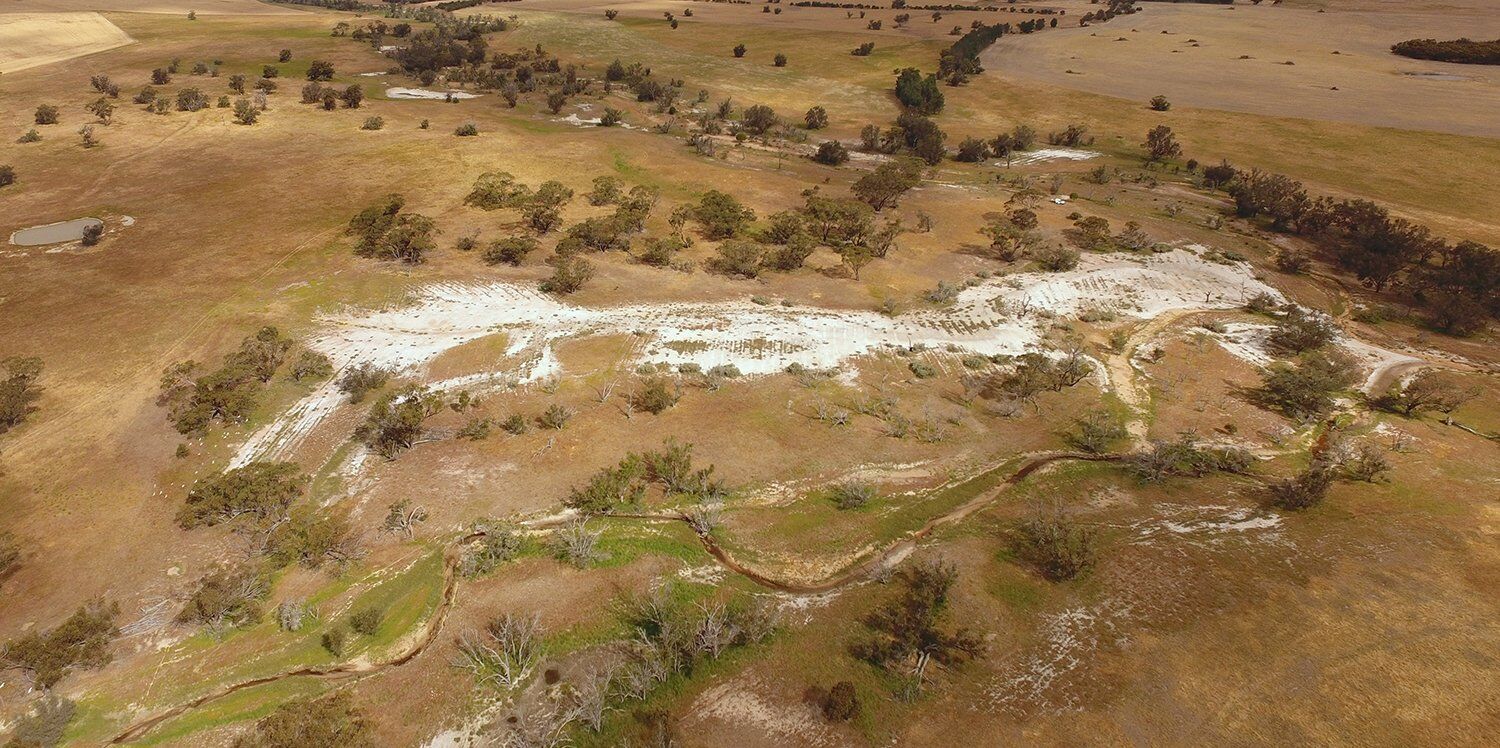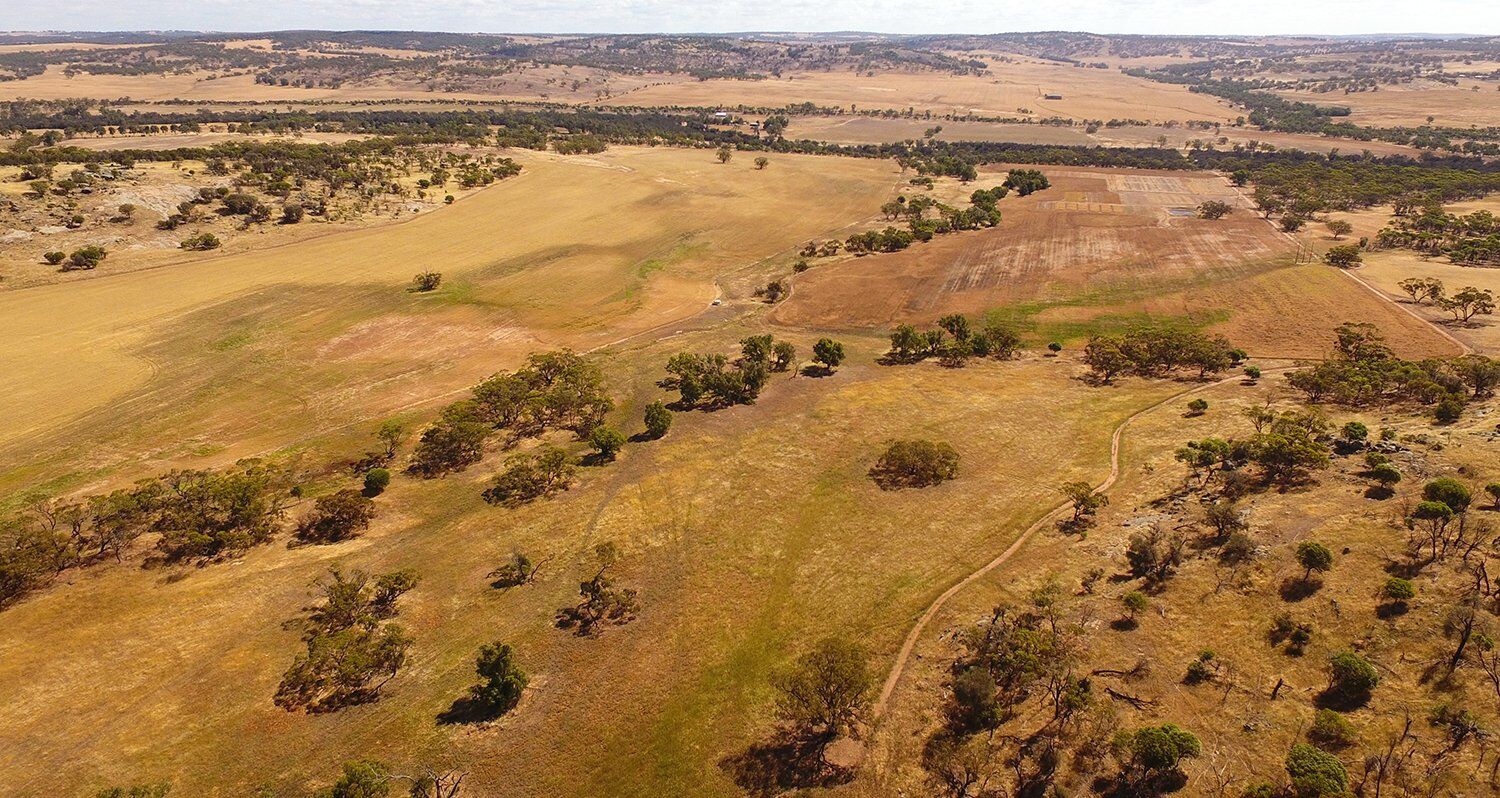Wheatbelt Landscape Rehydration Trial & Demonstration
WA Landscape Planner Lance Mudgway has visited another three properties as part of the ‘Landscape Rehydration Trial & Demonstration in the WA Wheatbelt’ project to assess them for participation in on-ground trials of landscape rehydration works in the Wheatbelt region.
‘Westendale’ – main creekline junction
Rob, Caroline & Alec Rex, ‘Westendale’ – For nearly 20 years ‘Westendale’ has been rotational grazing up to 20,000 head of merinos and perennial pastures on lower lying country. Grazing has primarily been on granite hills and low lying country plus on crop stubbles. They have been cropping the remaining areas with wheat, barley, oats, lupins and canola over winter plus some summer crops. A plan by Ron Watkins has been implemented to harvest subsurface and surface water from slopes into dams over much of the property with a neighbouring farm. Rob is now keen to trail landscape rehydration on several pasture paddocks and through the main creekline valley, which is subject to a high water table and salinity.
John & Martine Pascoe, ‘Red Hills’ – The property is adjacent to the Arthur River on granite hills with seepages high up on the slopes – some places are saline and others are fresh. ‘Red Hills’ raises sheep for wool and meat and cropping in winter and summer. John is keen to see how landscape rehydration can deal with saline seepage and help retain moisture on property to help build soil health and resilience.
Muresk Institute – middle and lower north catchment, looking toward the Avon River.
Muresk Institute – The training farm for the WA Department of Training & Workforce Development is located south of Northam on granite country. It aims to be a demonstration farm for regenerative agriculture and rehydration, providing diploma courses to undergraduates, short term courses to industry and offers function/training facilities with accommodation available. It incorporates real-life farming operations including raising sheep for wool and meat, cattle for meat, and winter crops. The steeper property has two similar catchments, both flowing into the adjacent Avon River. One could be fully rehydrated with regenerative practice while the other remains conventional.
This project is supported by funding from the Western Australian Government’s State NRM Program.
Talkin’ Soil Health Conference
TMI’s CEO Carolyn Hall and Landscape Planner Bill McAlister will travel across to WA to join Lance in presenting at the Talkin’ Soil Health Conference in York on 17-18th March 2022, which is being organised by Wheatbelt NRM. They will engage conference participants in a half day workshop at Muresk on the second day and plan to also have a workshop for Muresk students, universities and the WA College of Agriculture.
UWA farm – Ridgefield
Lance has also visited the University of Western Australia’s ‘Ridgedale’ farm near Pingelly where he met with Emeritus Professor Lynette Abbott (2020 General Jeffery Soil Health Award Winner) and discussed the possibility of a small demonstration project incorporating one of her field sites.for its open day.
Ridgefield is a 1600-hectare mixed-enterprise farm supporting agricultural research at the university, including the UWA Future Farm 2050 Project, which aims to imagine the best-practice farm of 2050 and build and manage it now.


